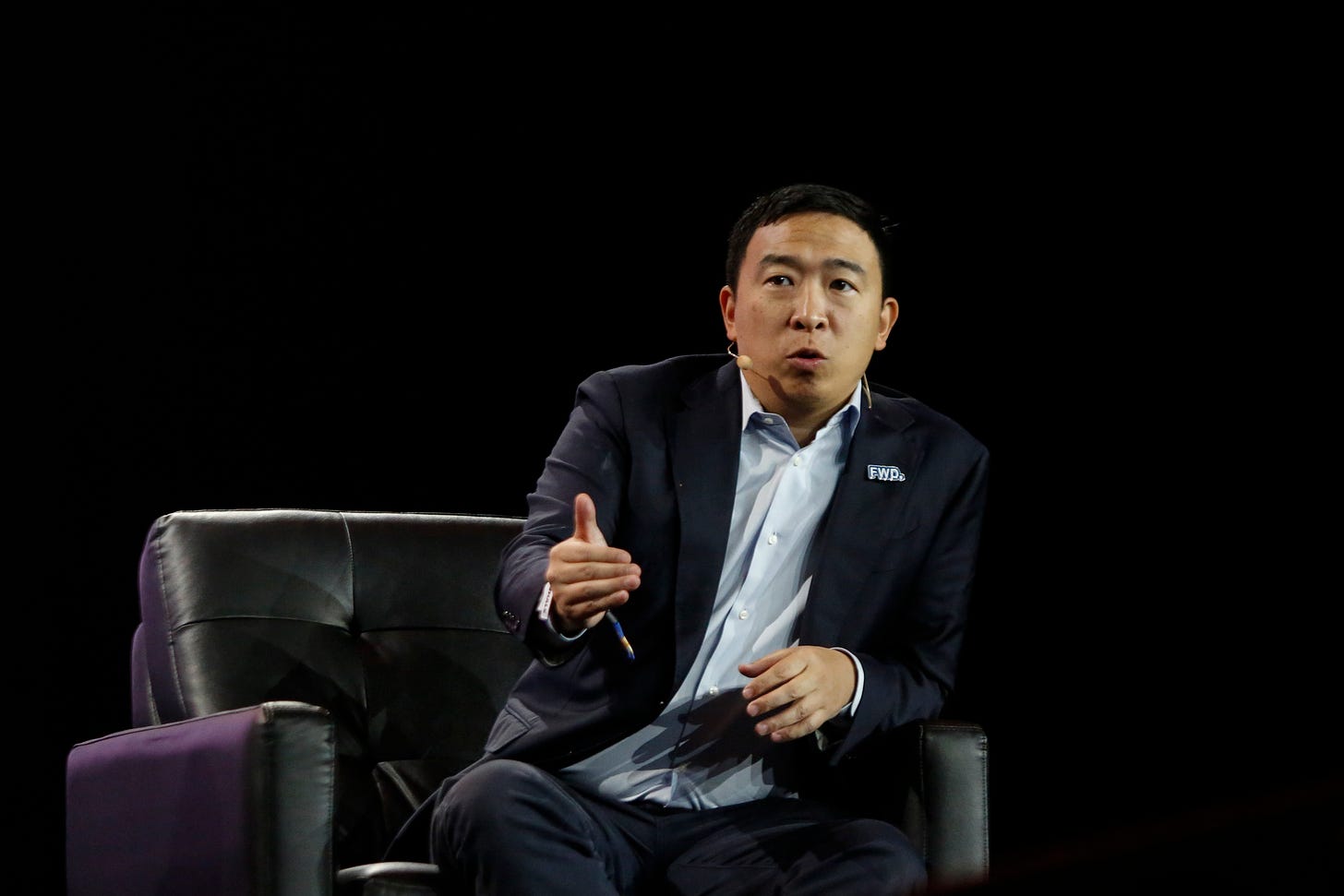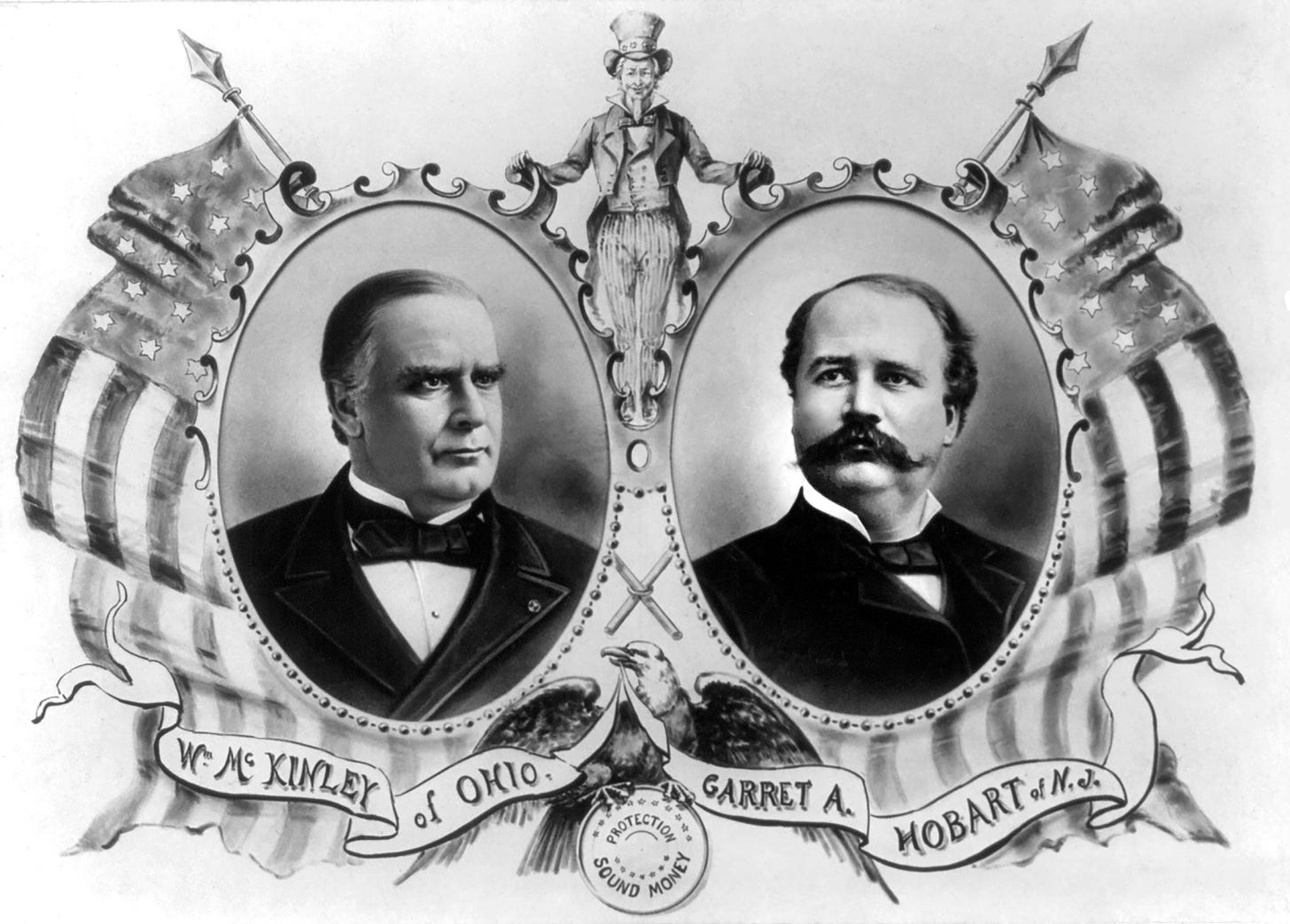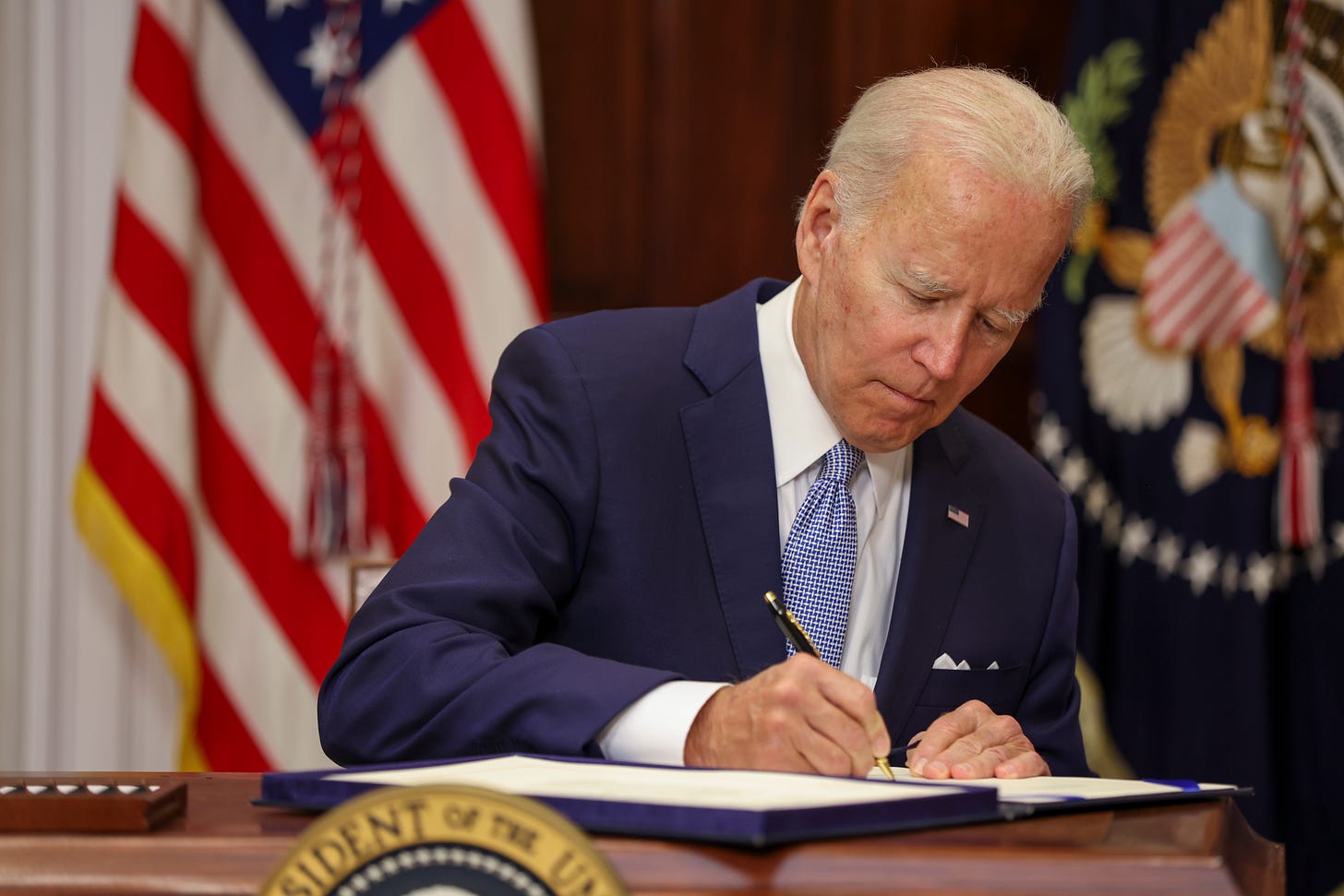Polarization—the sharp division of American society between red and blue—is the single greatest weakness of the United States as a country today. We face many challenges at present, over inflation, racial and gender inequality, crime, drug use, climate change, immigration, and the like, and all of these issues become harder if not impossible to solve if Americans fundamentally do not trust one another and seek to block any solution offered by the other side. This weakness is well understood by enemies like Russia’s Vladimir Putin, who has done everything he can to widen those divisions and has acted geopolitically at a moment when he thought the U.S. was too weak and self-preoccupied to respond effectively.
Many people have recognized the centrality of polarization and offered solutions for how to get out of it. Among these are: institutional changes, especially to our electoral laws, that would restructure the incentives under which politicians operate; the growth of a third, centrist party that grabs the middle ground from the extreme wings of the existing two; and grassroots movements to build moderation and understanding from the bottom up. All of these will be important components of depolarization, but none of them will be sufficient by themselves or take place soon enough to solve the problem.
The path out of polarization needs to be a political one, given the nature of our democratic system: that is, a realigning election in which one party decisively wins control of both houses of Congress and the presidency and holds on to power through two or three electoral cycles. These realignments are rare, but in conjunction with the other pathways suggested may be in reach in the coming years if one of the two parties plays its cards right.
Let’s go through the different suggested solutions to polarization, beginning with institutional fixes. Many people have pointed out that America’s first-past-the-post voting system tends to produce two polarized parties, especially when combined with popular primaries in which only party activists tend to vote. As political scientist Lee Drutman and others have argued, switching electoral rules to ranked choice voting or, better yet, proportional representation in multimember districts will ease the spoiler disincentive that has prevented the rise of viable third parties throughout American history. Electoral systems are not specified in the Constitution, and individual states and municipalities like Maine, Alaska, and New York City have already adopted versions of RCV. Under this system, voters choose not one but a ranked list of candidates, and if their top choice fails to get a majority, their vote is cast for their next preference. This makes it perfectly feasible to vote for a third party without fearing that this will aid your least favorite candidate.
The problem with RCV is that for it to have a major effect, it would have to be adopted in a large number of states for both party primaries and presidential elections. This may happen over a long period of time, but resistance to RCV is strong in the two existing parties that do not want to see their duopoly weakened. Moreover, it is not guaranteed to facilitate viable third parties; this has not happened in Australia, for example, where it is the rule.
The lack of RCV then affects the prospects of the second path towards depolarization, emergence of a viable third party. Andrew Yang, the former Democratic candidate for president and mayor of New York, together with former New Jersey Governor Christine Whitman and the Renew America Movement have founded a centrist Forward Party to provide an alternative. Yang points to poll data showing a large majority of Americans expressing dissatisfaction with the choices being offered by the Republicans and Democrats. The viability of any such third party will, in the end, be dependent on the spread of RCV and might work best as a vehicle for pushing the existing parties to adopt electoral law changes.

The third path to depolarization starts at the grassroots, and involves efforts to teach Americans the arts of civility and deliberation. Examples of this are the organization Braver Angels that seeks to connect red and blue America at a community level and to foster trust across party lines. Braver Angels has been remarkably successful in establishing chapters all over the country, demonstrating a real hunger among ordinary Americans to exit out of the current gridlock. Another approach is Jim Fishkin’s Deliberative Democracy Lab that has developed a technique of putting Americans with different views together in a single room over a period of days, providing them with quality information, and fostering informed discussion. (In the interests of full disclosure, the Deliberative Democracy Lab has just joined my own Center on Democracy, Development and the Rule of Law at Stanford.) Countless deliberative polls undertaken over the years have shown the ability of this model to build consensus when participants are taken out of their existing bubbles and made to interact civilly with one another.
These grassroots efforts are critical for building support for a more moderate form of politics, but they face two challenges. The first is one of scale: these groups and their techniques need to become nationally recognized as consequential and effective. The second is one faced by all grassroots organizations: they need to serve as mobilizing platforms that connect more directly to the political system and induce people to vote for reform, which is where power lies in a democratic political system. For this, they need strong and visible political leadership in addition to national visibility, both of which are very difficult to achieve.
See Also: Francis Fukuyama’s defense of liberalism on the Good Fight podcast with Yascha Mounk
These approaches—changes in institutional rules, third parties, and grassroots organization—are all important components that could contribute to depolarization. Many political reform proposals face a chicken-and-egg problem, however: you can’t enact legislation to reduce polarization until you’ve reduced the level of polarization. The path to a long-term solution is blocked in the short run. The only way to resolve this conundrum is through the democratic process itself: that is, through a decisive electoral victory by one party that seeks to promote serious change, and is able to enact it.
Depolarization through a realigning election has happened before in American history. The U.S. was comparably polarized in the period from the Tilden-Hayes election in 1876 that saw the withdrawal of the remaining federal troops from the South, up until the 1896 election of William McKinley. Elections were close and control over Congress and the presidency changed hands every few years. In many ways, the country was facing a similar monumental socio-economic shift as it moved from a largely agrarian society centered on family farms and small towns, to an urban-industrial one in which most people lived in big cities. The positions of the parties were at that point flipped: the Democrats were a backward-looking party with strong support in the rural South and Midwest, while the Republican power base was in the industrial Northeast and represented the interests of the corporate and banking elites that were opening the U.S. up to a global market. As today, the economic disruptions caused by socio-economic change provoked a populist movement, that of Nebraskan William Jennings Bryan, who inveighed (in a far politer manner than Trump) against the control of wealthy Eastern elites.
Today, polarization is based on a similar socio-economic division, between a Republican Party heavily based in rural areas and in smaller towns and cities, and a Democratic Party whose core constituents are typically urbanites who have benefited from exposure to a global economy. As at the turn of the 19th century, levels of immigration have been extremely high in recent years, producing a nativist backlash against the new ethnic groups pouring into America. But in 1896, the United States in effect made up its mind as to what kind of a society it wanted to be: it handed control over Congress and the presidency to the Republicans, who then remained in control for the next 16 years. This control made possible the reforms of the Progressive Era, including the growth of a modern state that was able to rise to the challenge of regulating an industrial economy, and a foreign policy appropriate to a rising great power.

Could such a realigning election occur in contemporary America? It could if one of the two political parties adopted a truly moderate and centrist posture both in policy and in rhetoric. Of the two parties, it would for better or worse have to be the Democrats. Though I am now a Democrat, I say this not as a partisan but simply given the realities of what these parties have become at the present moment.
Over the past couple of election cycles, both parties have been captured by their extremist wings. But the Republican takeover by Trump and his MAGA movement has been much more thoroughgoing than anything that has happened on the Democratic side, and represents a much more toxic form of politics. That wing has endorsed the Big Lie that Trump won the 2020 election by a landslide and was robbed of victory by fraud, and has been seeking to put in place election officials that could overturn a democratic election in 2024. Many Republicans know that this is wrong, but are unable to break from Trump publicly because they fear Republican voters. Those that do speak up like Congresswoman Liz Cheney have been ostracized from the party. The MAGA base has never constituted more than 35-40 percent of the entire electorate, but it does constitute a majority of Republican voters. The contemporary Republican Party will therefore never incubate a broadly appealing centrist vision, at least not until it begins to consistently lose elections.
The takeover of the Democratic Party by its progressive wing has been much less thoroughgoing and, in certain ways, harder to understand. Though the progressive torch-bearer Bernie Sanders did surprisingly well in both 2016 and 2020, he failed both times to get the nomination. Joe Biden was elected instead in 2020 as a centrist candidate, one who might return the country to a degree of normality after the Trump years. Once elected, however, Biden governed not from the center of the country, but from the center of his party, and made many more concessions to groups like the Justice Democrats and The Squad than many of his voters expected. This began with a series of gigantic spending bills culminating in the abortive Build Back Better effort, whose cumulative effect was to add to the inflationary pressures that are the Democrats’ chief liability at the present moment. The Democratic Party acted as if it were 1932 and not 2020, at a time when they held not a supermajority in both Houses but the slimmest possible lead in the Senate. Progressives have placed blame for their failures on centrists like Senators Joe Manchin and Kyrsten Sinema, but fault lies rather in the thinness of their mandate.
It is on the cultural front that the Democrats’ failure has been the most damaging. In reaction to George Floyd’s murder in 2020, many party progressives adopted the mantra “Defund the Police,” which has to be one of the dumbest slogans ever devised both politically and as a matter of substantive policy. Many local Democrats in Portland, Seattle, San Francisco and other deep blue cities then acted on it. On immigration, there is a clear majority of the country that favors immigration in general and is sympathetic to asylum seekers, but which also wants the process to be under the government’s control. Yet strong immigration enforcement remains unpopular among the party’s activist wing and has not been embraced by the Biden administration. Finally, some progressive positions on issues like critical race theory and transgender ideology are truly problematic. The dismantling of merit-based public education in the name of racial justice is a sure formula for mobilizing opposition among critical constituencies like Asian-Americans. It is the case that outlandish cultural positions are seized upon and exaggerated by the conservative media, but it should not be too hard for mainstream Democrats to have “Sister Souljah” moments where they decisively break from some of the extreme views being promoted by others in their party.
It is hardly the case that the vast majority of the over 70 million Americans who voted for Donald Trump in 2020 were hard-core MAGA types driven by racism and misogyny. A large number were in fact Hispanics and other minorities whom Trump had vilified, but who were nonetheless wary of Biden’s cultural and economic policies. Many conservatives were not voting for Trump as much as against what they perceived to be a woke extremist Democratic alternative. Progressive cultural policies have proved electorally toxic even in deep blue places like Portland, San Francisco, Seattle, and New York, where far-left Democrats have lost to centrist ones in recent elections, or have been recalled from school boards and other elective offices. In any event, presidential elections are not won by mobilizing progressive activists and driving up vote counts in California and New York; they are won in swing states by persuading centrist and independent voters.
In recent days, President Biden has begun to build out a centrist record on economic and social policy. Congress has passed a modest gun control measure after the Uvalde mass shooting, the CHIPS bill to boost American semiconductor manufacturing, and in a surprise compromise between Senators Manchin and Schumer, may soon act on a scaled-back climate bill that seriously tackles parts of the energy transition. The bills passed by Congress have attracted a surprising degree of Republican support, which makes them hard to characterize as far-out left-wing proposals likely to tank the economy.

Where Biden has not acted forcefully is to define himself as a centrist culturally. He has technically said the right things such as criticizing “defund the police,” but he doesn’t say it loudly and often, and on issues like immigration enforcement he has been completely silent.
Andrew Yang is correct that there is widespread dissatisfaction with the existing two-party system, and a large and uncaptured group of centrist voters who are disgusted with the extremist wings at both ends of the spectrum. His greatest chance of changing the system does not likely lie in winning power at a national level, given our electoral system. Rather, it would be to threaten the Democrats with loss of their centrist voters, forcing them to shift in his direction. This is a potentially dangerous game, however, that may simply split the non-MAGA vote (something Yang has vowed not to do).
To summarize: the most direct path out of polarization is for the Democrats to clearly move to occupy the moderate center of American politics and win elections on that basis. They can do this by passing sensible economic and social policies that demonstrate the possibility of effective government, and by breaking cleanly with the cultural agenda of their own left wing. That is what many of us hoped Joe Biden would do after 2020. Whether he and the current leadership of the Democratic Party are capable of pulling off anything remotely like this is unknown, and time is getting very short. Nor is it clear that there is a viable alternative leadership within the party. If the Democrats were to recover this ground and start to win elections more consistently, the Republicans would have to recognize that Trump had led them into a dead end and that they needed to appeal not to their own extremist voters, but to the center. This is the way that polarization ended in 1896, and how it might begin to end in 2024.
This article was cross-posted at American Purpose.
Francis Fukuyama is a senior fellow at Stanford University’s Freeman Spogli Institute, and sits on Persuasion’s board of advisors. His book The End of History and the Last Man (1992) has appeared in over twenty foreign editions. His most recent book, Liberalism and Its Discontents, was released earlier this year.
Follow Persuasion on Twitter, LinkedIn, and YouTube to keep up with our latest articles, podcasts, and events, as well as updates from excellent writers across our network.
